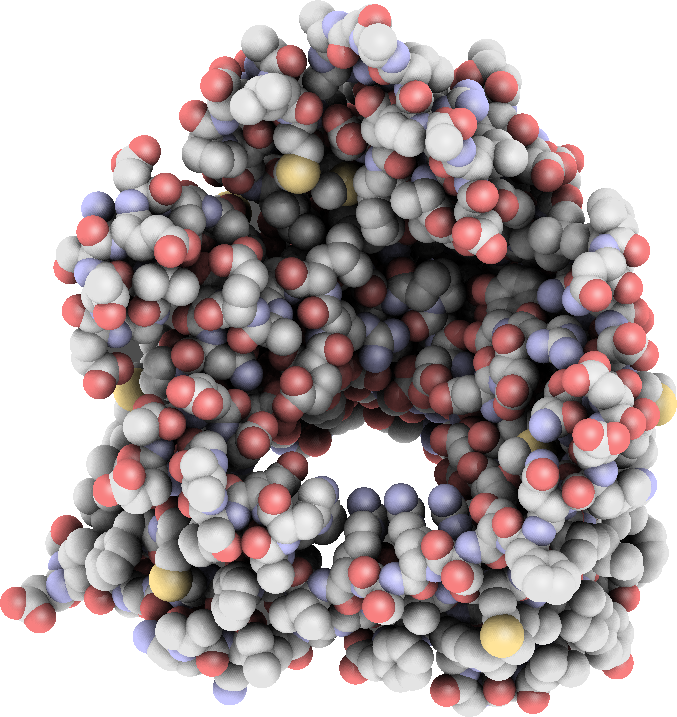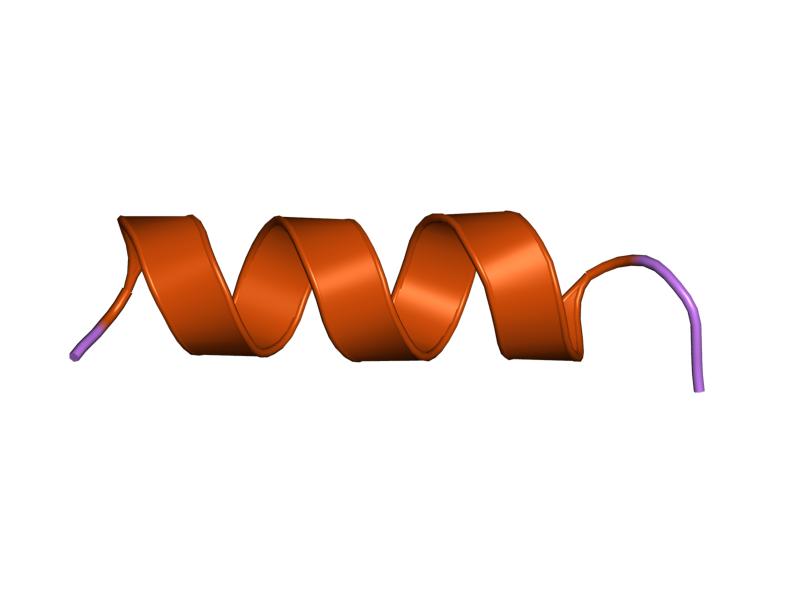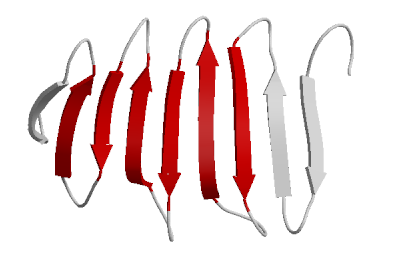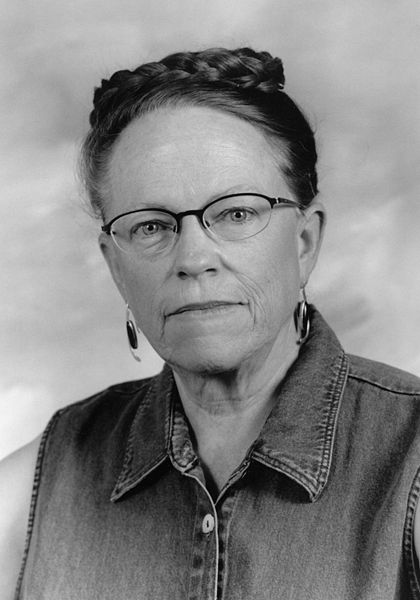Schrödinger's Kitten
Irreverent Science for Everyone
Molecular Curl Girl
(Original 2011/10/13 / Updated 2015/10/13 — see below)
Think of science things. Newton's laws, Celsius' degrees, Maxwell's distributions, Hertzsprung and Russell's diagram, Chandrasekhar's limit, fermi's -ons... You know you've made it in science when you get something named after you. Which is why I particularly want to big up the lady I'm talking about today1, because she did some ubiquitous work and noone's even heard of her, let alone tagged her name to her invention. Which is... duh duh duh!
The Ribbon (Richardson!) diagram. As drawn by the lady herself.
This is a protein. And before Jane Richardson started representing the sorts of structures proteins form like this, biochemists had this sort of thing to look at:
Although probably closer to the way proteins actually 'look'2, this is a massive jumble of a lot of information. You can't easily see the structure, understand it and figure out how the protein does what it does. What Jane did was to represent the different structures within the blob by different 'ribbons' — by abstracting this information, she freed up herself and other scientists to study how these parts fitted together and why.
Proteins are made of 12 different kinds of amino acids, strung together like beads on a necklace. It's relatively easy to find out this primary structure of the protein. But then things get more complicated, as some parts of amino acids stick to others along the chain, attracted by the electric charge created when a hydrogen atom is squished off centre. This twists the protein into a 3D shape which allows it to do its job. As Bauhaus knew, form follows function, and so finding out what shape the protein bends into — known as the 'folding' — is crucial to understanding how it works.
Correction 2015/10/13: While re-reading this for the next Lovelace day, I noted that I'd got the number of amino acids that make up proteins wrong. There's hundreds, though only 20 are found in humans. Sorry! Everything else is, as far as I know, right.
Structural language
Jane developed a pictorial language for referring to some common structural building blocks inside proteins. By chunking these commonly found, repetitive structures, she freed up space in the representation to show how they come together.
There are three features that appear a lot in proteins, called 'secondary' structures:
- An alpha helix — formed when an amino acid sticks to one a few places back down the chain. And then the next one does. And the next one. And so on. Continually turning in the same direction, while extending in another direction, makes a helix — and these, in ribbon diagrams, look like corkscrew curls. Unsurprisingly.
- A beta sheet — where the chain keeps doubling back on itself, with each row sticking to the next one through hydrogen bonds. In a ribbon diagram these are flat, fat chunky arrows.
- turns — when an amino acid sticks to another one, but just as a one off... these are shown as kinks in a slender thread.
These come together to form bigger features like beta barrels — beta sheets wrapped into a cylinder — and coiled coils, alpha helices twisting round each other like horny snakes. How the molecule fits these pieces together is shown using exaggerated perspective and colour coding — for instance, it's quite common to make one end of the string to be red and then proceed through the rainbow.
And she's not a doctor
Not only is Professor Richardson's work everywhere and essential for modern molecular biologists, she did it outside of the formal academic structure. After getting her Master's degree in physics, she helped her husband in the lab on his PhD3. She was a lab technician, and together they worked on the structure of proteins.
He took the measurements, and she looked at the data, analysis and display: and together, they made pictures so clear and useful that you can't do biology without them. She never got a formal doctorate, but jumped straight to being a professor of biochemistry at Duke University. Nice one. Her more recent work (still with her husband David) has been on molecular graphic displays, and assessing how good protein structure analysis is. The Richardsons run their own lab at Duke University in North Carolina.
To Jane Richardson, bringing ribbons and curls into the austere world of molecular biology. How feminine.
1. I know I'm late for Lovelace day, I had to move house and time got away from me... sorry Ada. ←
2.They are smaller than the wavelength of light, so you can't tell anything about them using optical methods — much like you can't pick up a grain of sand while wearing mittens. ←
3. 70% of physicists are married to other scientists. More info, in a report by Brianna Blaser: Love in the Lab ←
 RSS feed
RSS feed Twitter feed
Twitter feed




